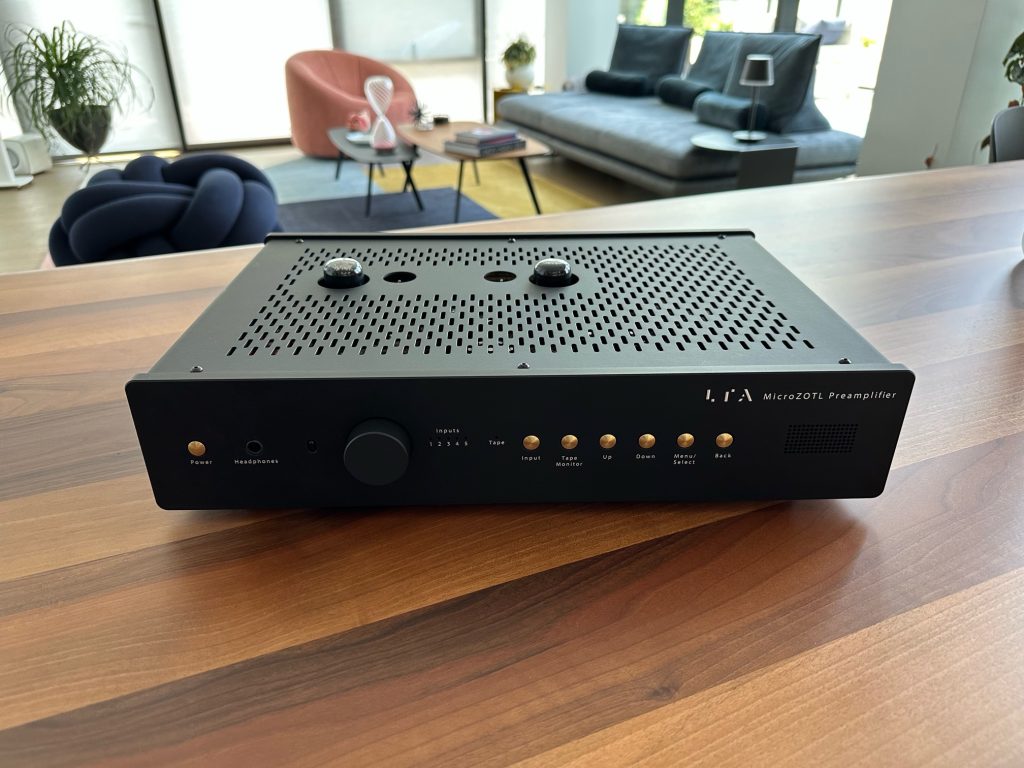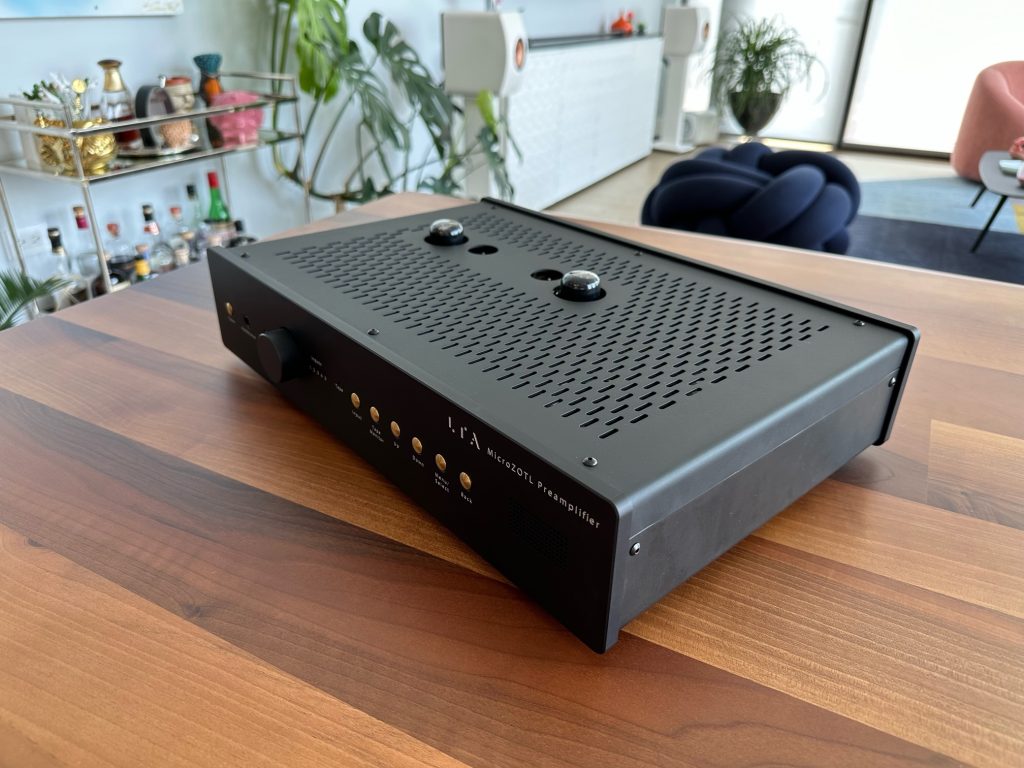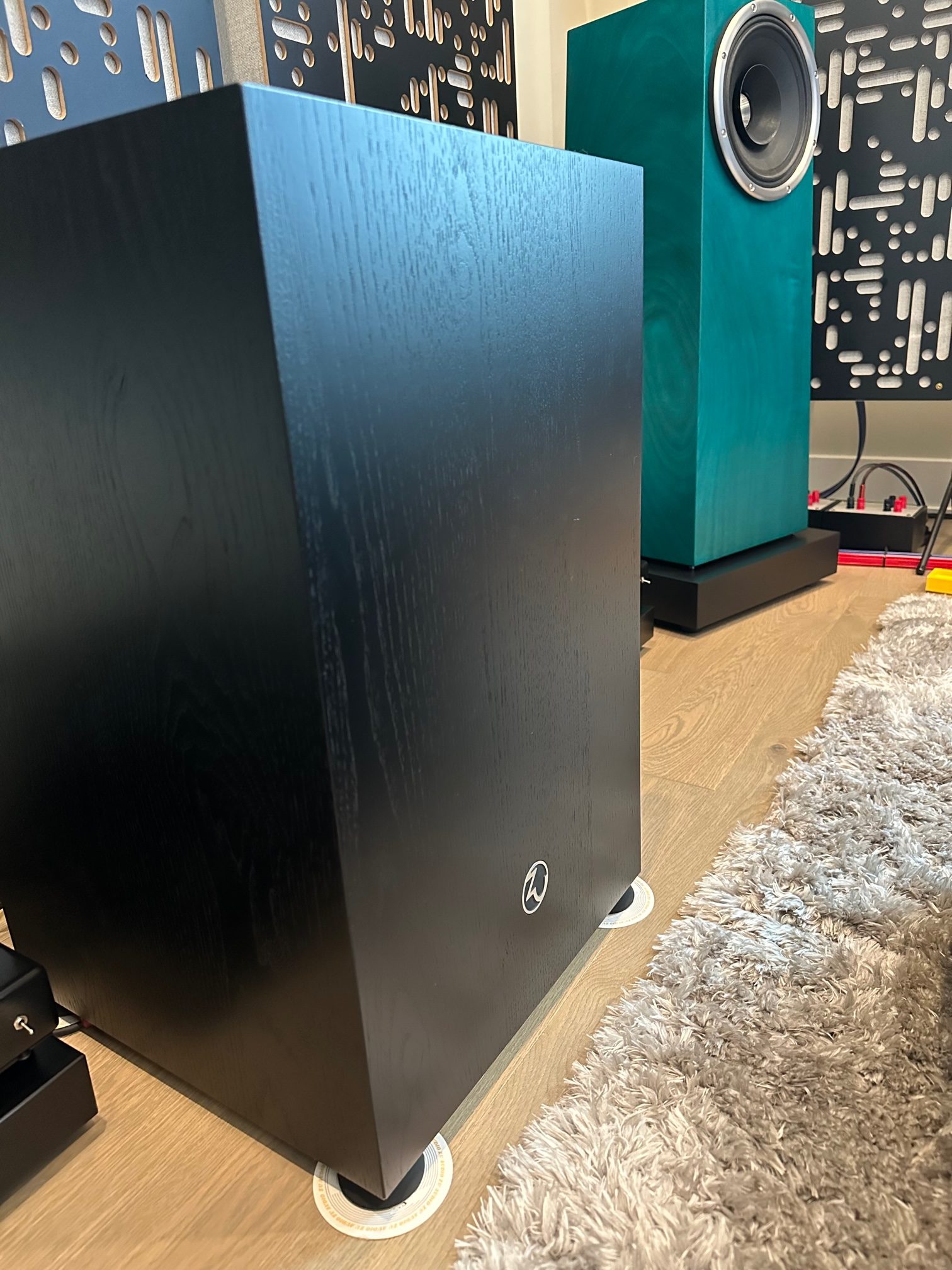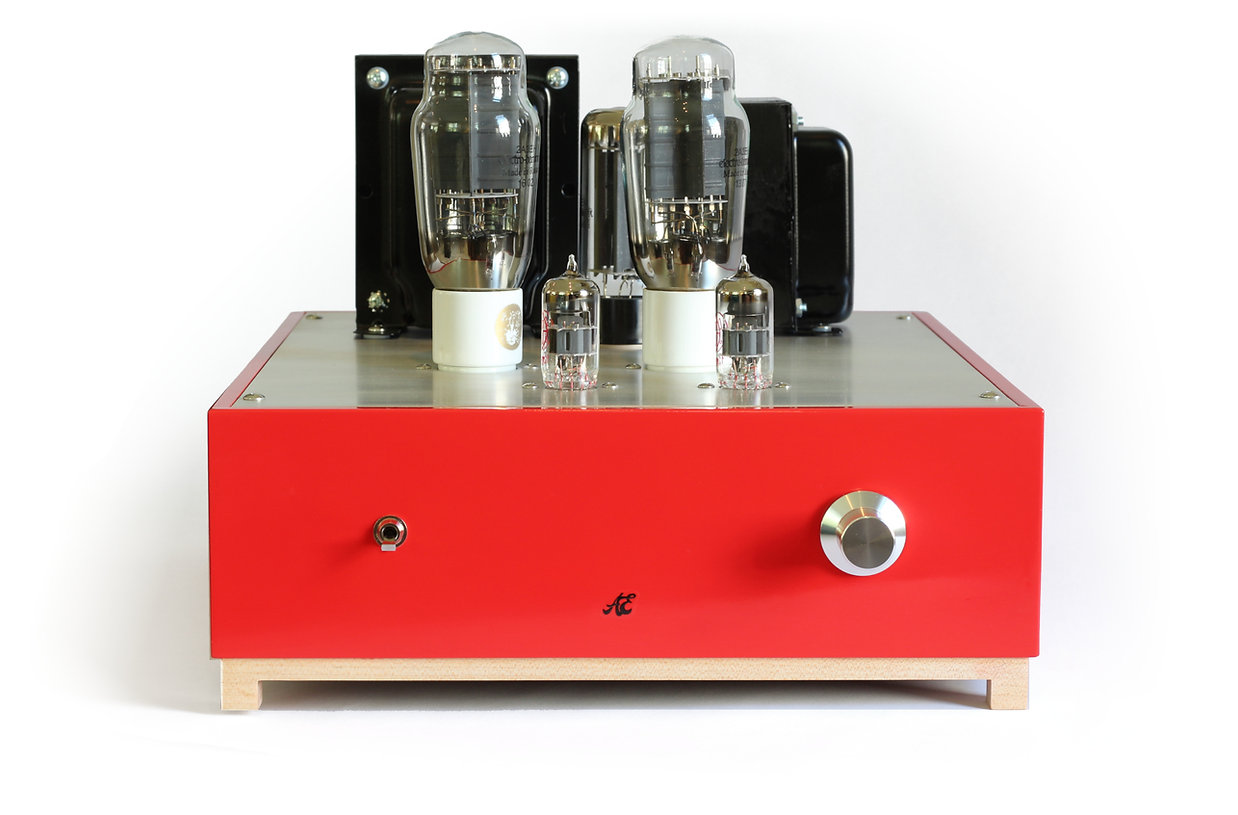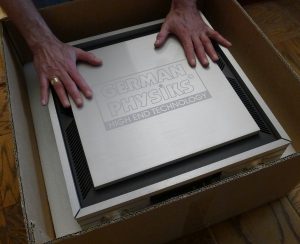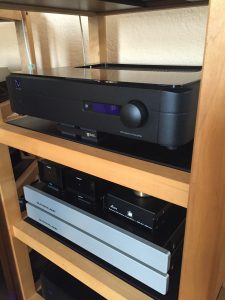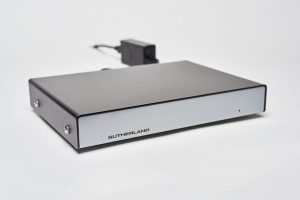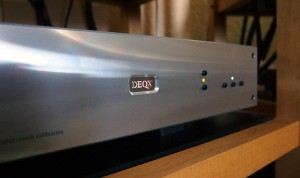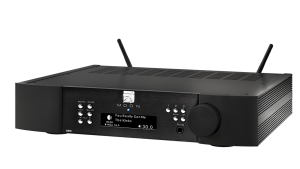I think everyone who reads my reviews has figured out that "this guys loves him some tubes." I want to confirm that this is a factually accurate statement. I would however clarify it to say "this guys loves well designed tube based products." But what does well designed mean in this context?
A tube based product, whether it be a amplifier, preamplifier, or even a DAC should make proper use of tube technology. It should be a core part of how the device works. I do not like solid-state circuits with tube inputs or traditional hybrid tube amplifiers. What I love is a well designed circuit that places the vacuum tube front and center. The result should be a fast sound with weight, body, and just a little bit of that harmonic signature that tells you there is something glowing in the chassis.
The thing about tube technology is that there has not been that much innovation, most of the best circuit designs and design patterns come from the 1950s, 60s, and even early 70s. As an example, my primary amplifiers, the ampsandsound Zions, are based off of the famed Citation V circuit released by Harman Kardon in the late 1950s. However there are a few companies that are looking at the tube circuit designs, and are truly doing something novel. Linear Tube Audio (LTA) is one of those companies.
LTA and ZOTL technology
LTA has the exclusive right to the patented ZOTL technology, created by David Berning. The ZOTL (Zero Hysteresis Output Transformer-Less) technology's goal is to remove one traditional component of tube circuitry, the output transformer. For those who are following along, you might say, so ZOTL technology is simply a Output Transformer-less design (OTL)? The answer is much more complex then that. Traditional OTL designs have their own drawbacks. They are extremely sensitive to speaker/equipment loads, and can often require a ton of tubes (and by extension power and heat) to generate a very small amount of power.
Instead, most designers choose to build amplifiers with transformers, which add coloration to the sound, but allow the resulting amplifier to pair with more equipment and generate more power for their speakers/loads. The result is that the output transformer becomes more important then the tubes and circuit used in the amplifier. If the output transformer is not big enough, it won't have full bandwidth at full power, you will lose bass, you will have high frequency roll off, and the resulting sound may sound compressed. If all the variables are right, output transformer based amplifiers sound wonderful. I own several and can say nothing bad about them, I have heard many more and that statement does not extend to the ones I do not own, it is hard to get these things to match well. Even when they do, as I said at the beginning of the paragraph, the output transformers adds its own flavor to the sound of the component.
What David Berning and LTA have been able to do with the ZOTL technology is remove the output transformer, and by extension remove its coloration, which lets you hear your tubes and the music without it. The results really are fantastic. ZOTL based amplifiers are fast, in my opinion they are just as fast as some of the best solid-state amplifiers. They have rock solid and flat frequency extension in both directions, and they have a purity to the way they sound. It truly sounds like you are hearing more of your music.
There are other benefits as well to the ZOTL technology, for example, tube life is dramatically extended because the ZOTL technology requires little current compared to traditional OTL and Transformer coupled amplifiers. The ZOTL technology is also not load sensitive and no load will not damage your amplifier.
The LTA MICROZOTL preamplifier
For this review, LTA sent me their MICROZOTL preamplifier with the Level 2 Upgrade and balanced input transformers. I was really excited to review this preamplifier. Several years ago I reviewed the MZ3, which uses the same circuit that is in the MICROZOTL preamplifier. The big differences between the base preamplifier and the MZ3 are the chassis size, inputs, built in power supply, and preamplifier specific functionality.
The Level 2 upgrade sets the preamplifier apart from the standard MZ3. It upgrades the output capacitors, and the power supply capacitors. I was also impressed at the circuit board wiring in general. I remember my MZ3, and while it sounded great I was a little surprised at the wiring inside the amplifier, the preamplifier is laid out beautifully.
The other thing the preamplifier has is balanced inputs. These inputs go through Lundahl input transformers. For those who do not know how input transformers work, they provide galvanic isolation between your source and your preamplifier. They also can, and do in the case of the LTA preamplifier, provide balanced to single ended conversion. The LTA preamplifier itself is single-ended, and any incoming balanced signal needs to be converted to single-ended. Balanced input transformers are in my experience the best way to do this conversion. You get all the noise cancellation benefits for your cable run, and the extra isolation tends to result in better bass.
The ZOTL technology means the resulting preamplifier is quite light. Lifting out of the box was a pleasant surprise. Light though, does not mean cheap feeling. LTA in general does an incredible job building beautiful products that feel sturdy. The case work top notch, and I love the way they do the white dot matrix display. The front of the preamplifier has a volume knob, several brass capacitive buttons, a headphone output, and the dot matrix display. The top of the preamplifier has four total holes. Two for the two 12AT7 input tubes, and two for the 12SN7 outputs tubes.
One thing I want to point out is LTA's use of the 12SN7 as the output tubes. The 12SN7 is the same tube as a 6SN7, just built for 12 volt heater instead of a 6 volt heater. The issue is that 6SN7 are incredibly popular and very expensive to find NOS. On the other hand 12SN7s are easy to find and relatively cheap. LTA does not disappoint with their NOS tube compliment. My review sample came with NOS Sylvania gold pin black plat 12AT7s and NOS KenRad 12SN7s. While you can buy other NOS tubes, this compliment gives the buyer no need to source NOS tubes unless they want to, the tubes provided sound awesome. If your have a pair of 6SN7s, good news, all you have to do is flip a switch and you can drop in your expensive 6SN7s.
Spinning the preamplifier around, there are three single-ended analog inputs, a tape loop, one balanced input, and two single-ended RCA outputs. There is of course a standard IEC input for power as well. LTA used to supply their products that needed remote controls with Apple aluminum remotes. My LTA preamplifier came with a black LTA branded remote. It felt great in the hand and I had no complaints.
The volume control is a rotary encoder. This means the volume knob can can spin a full 360 degrees in any direction. The movements are detected and adjust the volume using the digital encoder. Volume control is handled by a resistor ladder for perfect channel matching, and precise volume changes.
The LTA MICROZOTL preamplifier is incredibly flexible. You can adjust balance, and volume offset (gain/reverse gain) per channel and you can do it all from the remote. The remote allows you to change input, volume, and configure balance and gain. The remote does not allow you to turn the preamplifier on or off, but that is not a big deal to me. The ZOTL technology also means you really do not need to turn off the preamplifier which is nice.
How is the Headphone Amplifier?
As I said above the MICROZOTL preamplifier can be described as a one chassis version of the MZ3. I reviewed the MZ3 HERE. What you will see if you read that review is how much I enjoyed the MZ3 as a headphone amplifier. The same is true for the MICROZOTL preamplifier.
While I no longer have an MZ3 on hand to compare, my memory tells me the two performed very similarly, but the MICROZOTL preamplifier seemed to have an edge in detail and clarity. This is likely due to the Level 2 upgrade.
Listening to the Audeze LCD-5, I felt like the MICROZOTL preamplifier had great control. The sound had great tone, and bass was presented in a clean and clear manner. I really enjoyed listening to Melody Gardot, and I spent several evenings with my headphones on just enjoying jazz album after jazz album. Now it was not just jazz, rock, rap, metal, you name it, the MICROZOTL delivered as well. I could really hear the difference the ZOTL technology made with metal music. Listening to Metallica's "One," the detail just came through in a way that my traditional transformer coupled headphone amp just could not do. Things that sounded muddy on that amp, sounded crystal clear on the ZOTL.
What I did feel like the ZOTL gave up though was a little bit of body. Things sounded thinner and lighter. These aspects of the sound are also why it sounded so fast and zippy, but in some cases I was left missing a sense of impact that I normally do not yearn for with my other amplifier. This being said , I love ZOTL technology for headphones, and really thought it paired well with the LCD-5. I also love that the headphone amplifier and preamplifier use the same circuit, it is literally the same output. As a result the headphone output is not an after thought like it is on many other similar products. Saying this differently, for its retail price you are not only getting a reference headphone amplifier, but a reference preamplifier and the value proposition cannot be overstated. This preamplifier punches well above its price.
Critical Listening as a preamplifier
To evaluate the MICROZOTL preamplifier I place it into the following system, and let it break in for 200 hours before doing any critical listening:
- Speakers: Zu Soul 6
- Amplifier: ampsandsound Zions, ampsandsound Mogwai SE Rev 2
- Source/DAC: DCS Rossini, Roon CORE
- preamplifier: DCS Rossini, LTA MICROZOTL preamplifier
- Power Conditioning: PS Audio P12
- Cabling: Wywires, and Wireworld cabling
I wired the system with balanced cables from the DCS to the MICROZOTL preamplifier, and single-ended cables from the preamplifier to the Zions. After getting everything setup I sat back and began to listen.
Like on headphones, it is really incredible how fast the LTA preamplifier sounds, micro-details were incredibly clear and it seemed like the weight of the system shifted a little. The system was more open and more neutral, but also more powerful and a little more forward. This forward leaning presentation was not a bad thing, it was exciting and lively, it felt and sounded right.
Traditionally I use my DCS both as a DAC and as volume control. The DCS is not like most DACs as it has plenty of drive and sounds great with most amplifiers. Normally putting anything in between the DCS and the amplifiers results in some noticeable loss. The MICROZOTL preamplifier was not immune from this, as a little bit of low level detail seemed to disappear, but it was replaced with so much more texture, and a more lively and engaging sound. I felt the trade-off not only made sense but was well worth it. The LTA preamplifier was also incredibly quiet which is sadly not a given even at this price point.
Listening to Mika, one of my favorite artists, the song "Tomorrow" grabbed me and didn't let me go. I write a lot about this song, it is a go to test track of mine. With the LTA preamplifier, the space became a little more three dimensional, the stage moved forward, and micro-details became more obvious. Imaging seemed to remain consistent, and the sound stage projected seemed to be bigger then the room. Even at lower volumes, which is where you can really hear the difference a good preamplifier makes, the LTA really impressed me by keeping the stage, the space, and the weight of the performance intact.
While listening to Lizzo with my wife, she told me that it was not just me who noticed differences with the LTA preamplifier. As we listened to "About Damn Time" together, she asked me "what did you do, things seem to be a bit clearer?" I had to agree with her, the LTA brought about this sense of clarity into the room. Normally, clarity comes at the expense of warmth, and to me that is the secret of the ZOTL technology, it achieves clarity without sacrificing warmth.
Swapping out my Zions for the single-ended Mogwai SE, the extra drive of the LTA preamplifier was immediately noticeable. It showed a significant increase in control of the Mogwai, and bought out a lot of the same characteristics mentioned above. It simply sounded cleaner and clearer.
Throughout my time with the LTA preamplifier these characteristics continued to shine through, so too did the build quality. A preamplifier is something you touch, and I would be missing a big part of the experience if I didn't talk about tactile experience of using the LTA preamplifier. This experience starts with the volume control, spinning the volume knob has just the right amount of resistance. As soon as you start to spin the knob you can hear the resistor ladder volume control begin to change as the relays open and close. The white dot matrix display shows the volume level and keeps up as you make changes using the knob. The use of capacitive buttons are also a really nice touch. For those who do not know what this is, it is a button that does not press, but instead senses your touch. The result is a experience that feels like a button, but with no moving parts. This means less chance of breaking, and the feel to your hand is rock solid.
Tube Rolling
I said above that what LTA ships with the LTA preamplifier are exceptional examples of NOS tubes. To be clear you do not need to roll in other tubes, and all of the listening impressions above were done with the stock tubes.
All that being said, when you got fun NOS tubes, you want to use them. In my case I broke out a pair of NOS GEC a2900s. The GEC a2900 is an incredible 12AT7 variant. It uses full size plates which is more rare for 12AT7s, it is a black plate tube, and it is incredibly smooth sounding. It pulls more heater current then a standard 12AT7 but after getting clearance from LTA, I swapped out the input tubes for my pair of a2900s.
The difference between the Sylvanias and GECs were immediately noticeable. The GECs have a richer tone, and in my opinion extend farther in each direction. The bass is also a little better, and 3-D effects in the sound stage become more pronounced. To be clear, at 10x the cost of the Sylvania gold pins, the GECs better do something better.
I do want to clarify, the point I am making here is not "go out and buy some GECs," it is instead "the LTA preamplifier is incredibly transparent and will show you what your tubes sound like." As I said at the very beginning of this review, I love equipment that puts your tubes front and center, and the LTA preamplifier does just that. I also want to make it clear that the stock tube complement is incredible and unheard of from nearly any other manufacturer. Unless you already have them, don't go buying something else, you are wasting your time and money.
Concluding Thoughts
This is my second review of LTA equipment and like the first review I am left really impressed. Not just at how the equipment sounded, but also at its price to performance ratio. At $5750 this is not cheap, but you not only get a reference remote controlled preamplifier, but also a reference headphone amplifier. Candidly, at this price point getting one of those things is sometimes hard, getting both is nearly impossible. Getting both in a package with the look, finish, and sound quality of the LTA, at its price point is extremely rare, the LTA MICROZOTL preamplifier is simply one of your only really good options.
If you are in the market for a reference preamplifier, do not need a built in phono stage, want the latest in tube technology, and want a reference class headphone amplifier built in, the LTA MICROZOTL preamplifier delivers all of it and more. Thank you LTA for allowing me to review it, I loved it, and candidly I wish I did not have to give it back.
LTA MICROZOTL preamplifier
Retail: From $4450. $5750 as reviewed with Level 2 upgrade.
LTA




